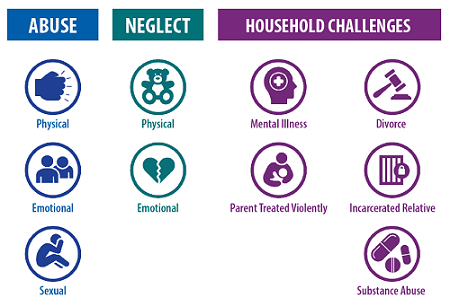Michigan Adverse Childhood Experiences Data Dashboard
63%
of Michigan high school students have reported one or more adverse childhood experiences (ACEs).
What are Adverse Childhood Experiences (ACEs)?
ACEs are potentially traumatic or stressful experiences that can happen to any of us before we turn 18.

Source: Centers for Disease Control and Prevention. Adverse childhood experiences prevention strategy. Atlanta, GA: National Center for Injury Prevention and Control, Centers for Disease Control and Prevention; 2021. https://www.cdc.gov/injury/pdfs/priority/ACEs-Strategic-Plan_Final_508.pdf
68% of Michigan adults have reported one or more ACEs.
Source: 2019 Michigan Behavioral Risk Factor Survey
ACEs are common, and have the potential to significantly affect physical, mental, and economic health. Focusing on prevention can dramatically reduce their negative impacts on individuals and communities.

4.4 Million
In 2019, an estimated 4.4 million adults in Michigan reported having at least one ACE.
Source: 2019 Michigan Behavioral Risk Factor Survey

260,000
In 2019, an estimated 260,000 Michigan high school students reported having one or more ACEs.
Source: 2019 Michigan Youth Risk Behavior Survey

$585 Billion
Child abuse and neglect are important ACEs that are often examined to look at financial burden. The estimated total economic burden of child abuse and neglect in the United States is as large as $585 billion dollars.
Source: Fang et al. 2012
Not all children who experience ACEs develop health problems. In fact, many demonstrate resilience – living healthy, happy, and productive lives. Even struggling families have many inherent strengths (protective factors such as family and community support), that help kids overcome trauma and adversity.
Data Tell The Story
Click a card to view data based on that category
Adverse experiences are events or risk factors that occur through many areas of a child’s life. Within each area there are also many protective factors that support children and families.
Interested in learning how ACEs impact our bodies and minds?
Click the button below to learn more about toxic stress.
